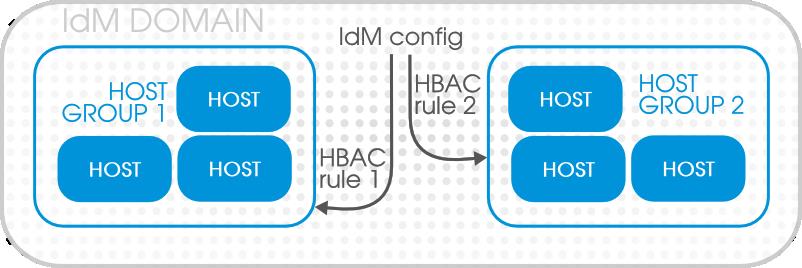访问控制
Posted 柳暗花明
tags:
篇首语:本文由小常识网(cha138.com)小编为大家整理,主要介绍了访问控制相关的知识,希望对你有一定的参考价值。
RBAC和ABAC
https://www.jianshu.com/p/107c50720a6f
面向目标机器的资源。
什么是RBAC?
RBAC.png比如当用户登录某财务管理系统的时候,允许哪些用户访问编辑哪些菜单,允许访问编辑哪些商品资源等,决定这些权限都取决于用户是哪个角色。
在RBAC,角色通常是指具有某些共同特征的一组人,例如:部门、地点、资历、级别、工作职责等。
在系统初始时Admin根据业务需要创建多个拥有不同权限组合的不同角色,如角色A拥有全部菜单的访问跟编辑权限,角色B只有菜单A的访问编辑权限无其他菜单的编辑权限。当需要赋予某个用户权限的时候,把用户归到相应角色里即可赋予符合需要的权限。什么是ABAC?
ABAC.pngABAC访问控制利用了一组称为 “属性 “的特征。这包括用户属性、环境属性和资源属性。
用户属性:包括如用户的姓名、角色、组织、ID 和安全许可等内容。
环境属性:包括如访问时间、数据的位置和当前组织的威胁等级。
资源属性:包括如创建日期、资源所有者、文件名和数据敏感性。可以根据业务需求制定不同的访问控制策略。如可以指定财务部门的人员可以在工作日上班时间并且在办公网络访问系统,若属于财务部门的人员使用办公网络但不在办公时间访问则增加进一步的鉴权验证,若属于财务部门的人员不在办公时间访问且非使用办公网络则拒绝访问。
RBAC和ABAC的区别
RBAC与ABAC之间的主要区别在于方法授予访问权限的方式。 RBAC按照角色授予访问权限,ABAC可以根据用户特征,对象特征,操作类型等属性确定访问权限。
Host-Based Access Control
面向目标机器服务
https://access.redhat.com/documentation/en-us/red_hat_enterprise_linux/6/html/identity_management_guide/configuring-host-access#about-hbac
Host-based access control rules (which are described in Chapter 22, Policy: Configuring Host-Based Access Control) can be applied to individual hosts. However, using host groups allows centralized, and potentially simplified, access control management because an access control rule only needs to be defined once and then it is applied immediately and consistently to all the hosts within the group.Figure 22.1. Host Groups and Host-Based Access Control
Note
While access must be explicitly granted to users and hosts within the IdM domain, IdM servers are configured by default with anallow allaccess control rule which allows access for every host within the domain to every host within the domain.To create an IdM server without the defaultallow allrule, runipa-server-installwith the--no_hbac_allowoption.The rule first defines things that can be accessed, and there are two types of entities:
Note
It is possible to use categories for users and target hosts instead of adding each one individually to the access control rule. The only supported category isall.The entities in host-based access control rules follow the Kerberos principal entries: users, hosts (machines), and services. Users and target hosts can be added directly to host-based access control rules. However, services must be added to the host-based access control configuration first to make it available to rules, and then added to the access control rules.
以上是关于访问控制的主要内容,如果未能解决你的问题,请参考以下文章

